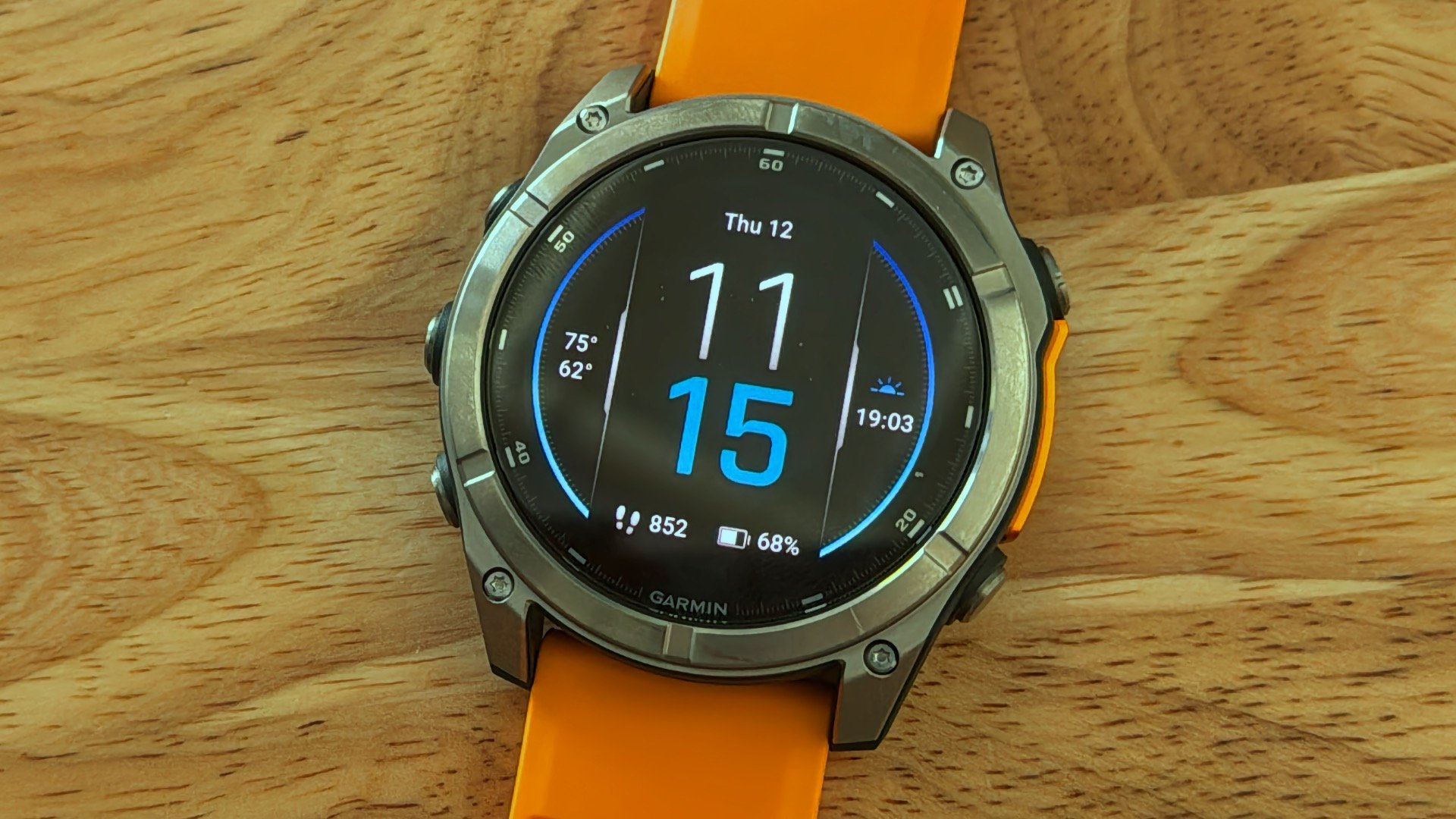
Garmin Fenix 8 Review
The Garmin Fenix 8 is Garmin’s latest premium outdoor smartwatch built for hiking, training, and everyday use. In this Fenix 8 review, I go over real-world battery life, GPS accuracy, screen performance, and the new features you actually get. It’s a powerful watch, but not everyone will find it worth the high price tag.
No Sponsors, No AI
I didn’t accept a free Fenix 8 from Garmin. I bought it with my own money so I could share honest observations, not marketing bullet points. If you’d like to support independent, ad-free reviews like this, you can join me on Patreon or use my affiliate links at Amazon or REI. Every bit helps keep the site going.
Garmin Fenix 8 vs Epix Pro: What’s Really Different
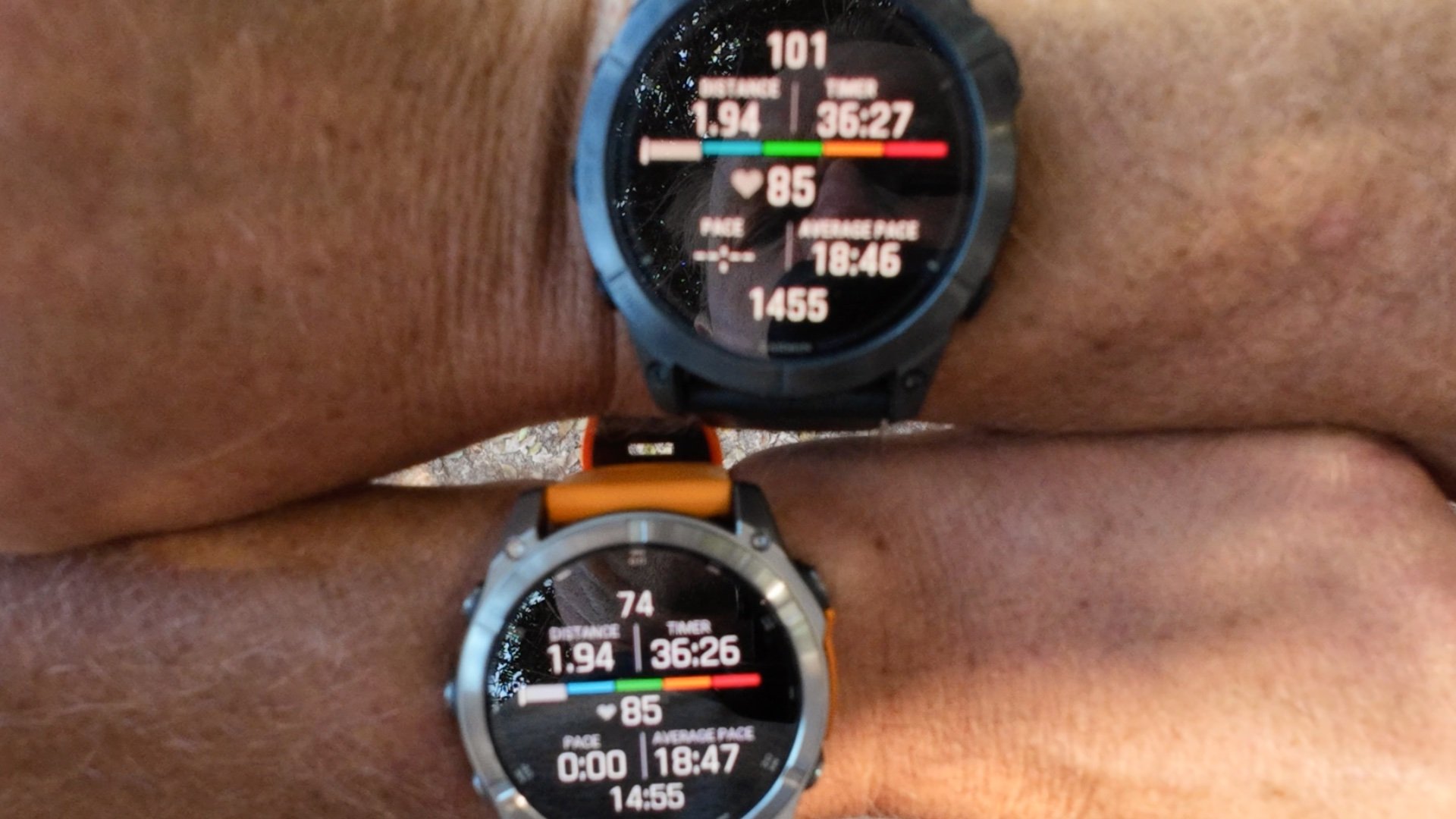
On paper, the Fenix 8 and Epix Pro look almost the same. The GPS accuracy is basically identical, the battery life is within a day or two depending on the mode, and the AMOLED screen performs the same outdoors. If you only compare spec sheets, it’s hard to see why Garmin even released a new model.
But the Fenix 8 isn’t just a spec bump. Day to day, it feels more like Garmin resetting the line. The buttons have a different design and feedback, the operating system has been rewritten with new menus and workflows, the flashlight has been tweaked, and even the fonts and watch faces have been reworked. Some of these changes are small, but together they make the Fenix 8 feel different than the Epix Pro or Fenix 7.
GPS Accuracy

In the field, the Garmin Fenix 8 GPS accuracy looked the same as my Epix Pro. On hikes where I wore both watches, the tracks lined up almost perfectly. Switchbacks were logged cleanly, and I didn’t see drift or jagged lines that would make one better than the other.
On paper, though, the Fenix 8 does add more GNSS compatibility. It supports GPS, GLONASS, Galileo, QZSS, and BeiDou, along with multi-band GNSS and SatIQ technology, which automatically balances accuracy and battery life. The Epix Pro has multi-band and SatIQ as well, but only lists GPS, GLONASS, and Galileo.
For most North American hikes, you won’t notice a difference, the core accuracy is already solid. But if you’re traveling in regions where QZSS (Asia-Pacific) or BeiDou (Asia/Europe) provide stronger coverage, the Fenix 8 may have an edge. In my real-world use, though, the GPS performance was basically identical to the Epix Pro.
Battery Life
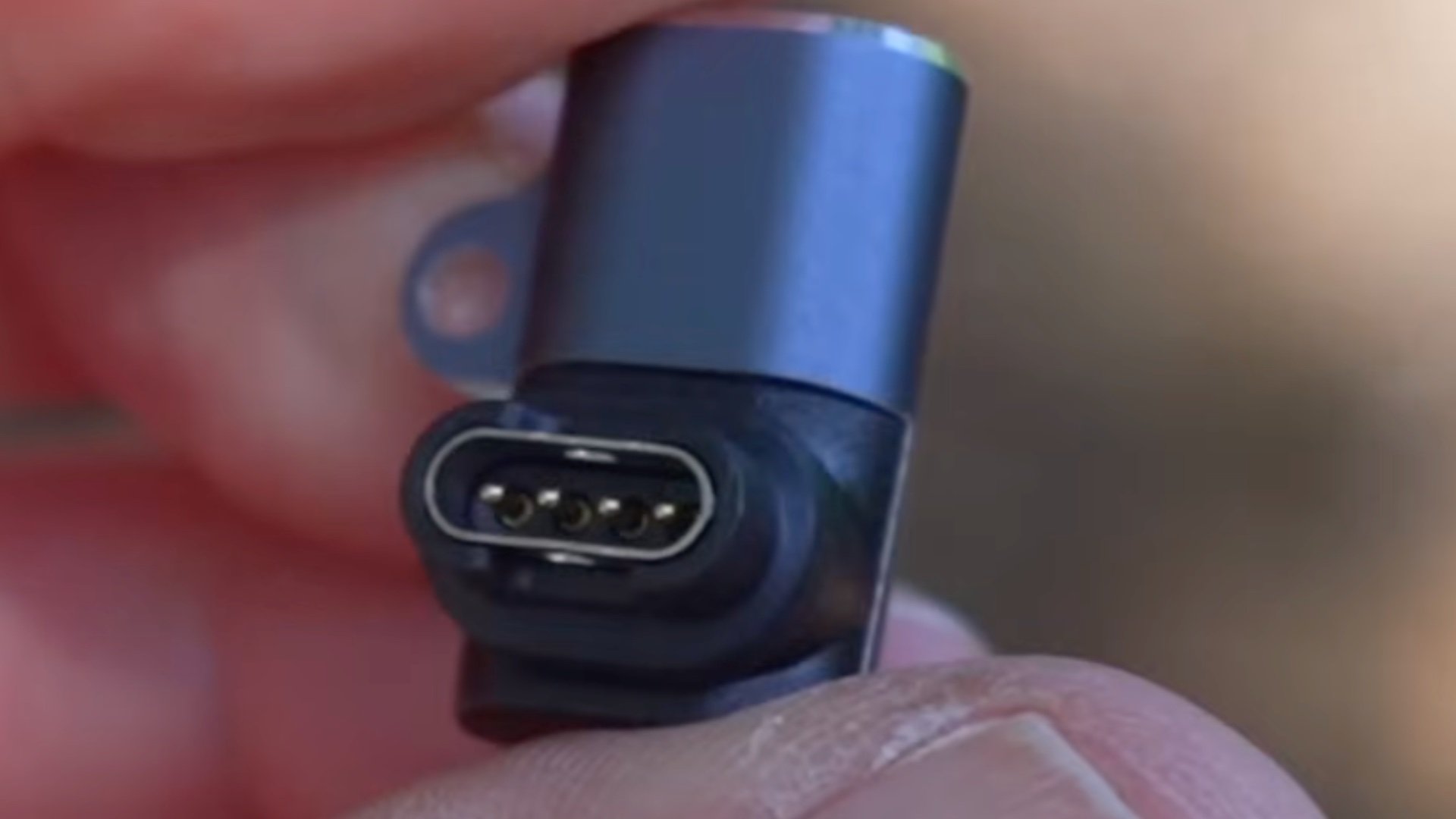
The Fenix 8 uses the same proprietary charging adapter as older models.
One of the strengths of the Garmin Fenix 8 is its battery life, though it isn’t a major leap from the Epix Pro in everyday use. Here are the general ballpark numbers that I've gotten:
- 2-3 weeks in smartwatch mode
- 56 to 78 hours activity tracking with multi-band and all GNSS on
- With a mix of day-to-day and workouts, I charge every week or so.
The numbers depend on how you use the watch. Features like always-on display, backlight settings, navigation, and music playback all cut into runtime. In my real-world hiking use, I consistently get enough battery life to do long trips and backpacking trips without having to worry about charging. The battery life is excellent for an AMOLED outdoor watch, but it’s not noticeably longer than the Epix Pro. If you’re already happy with your Epix Pro, you’ll see similar performance here.
Screen and Visibility
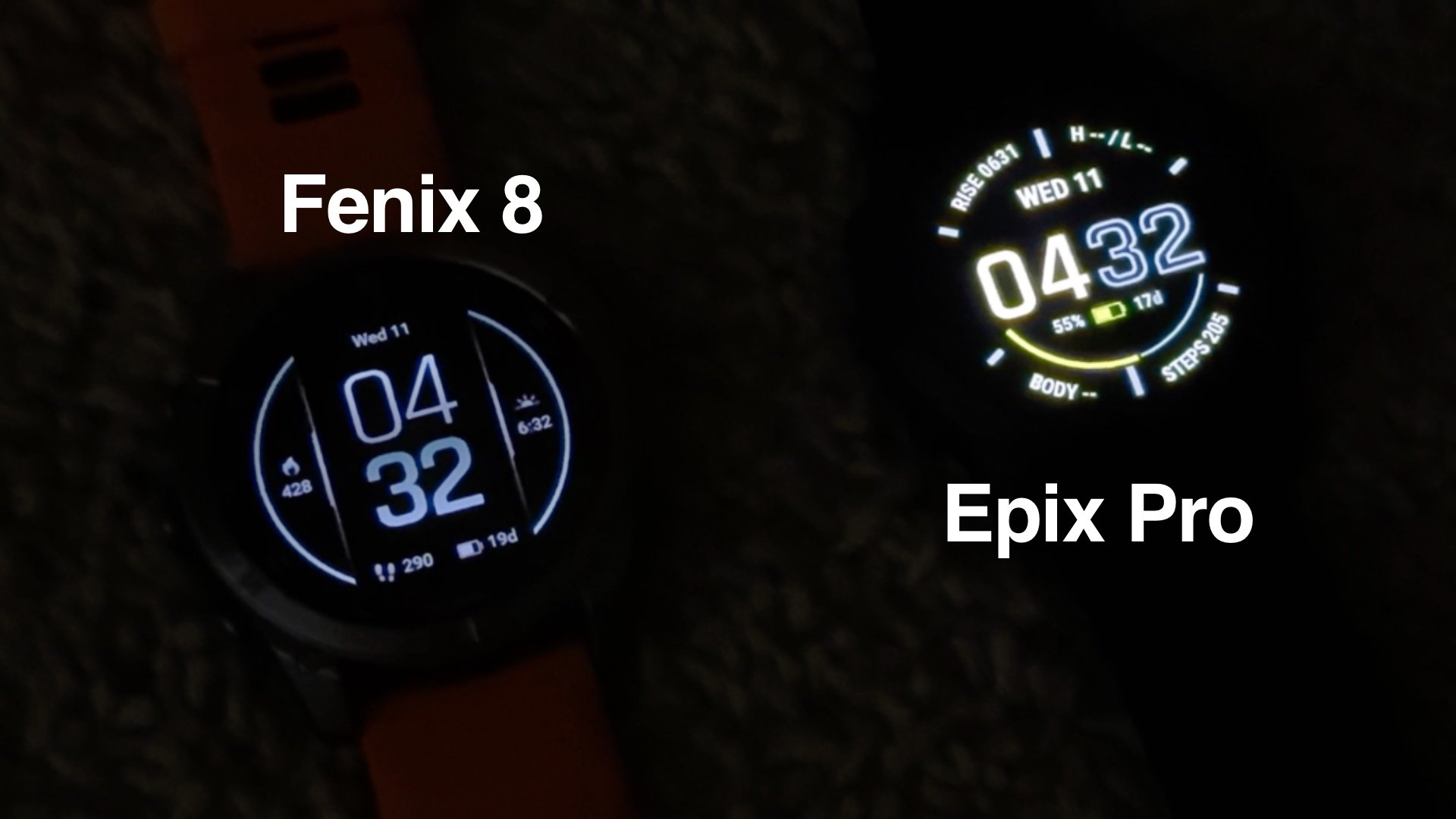
The Garmin Fenix 8 AMOLED screen performs almost the same as the Epix Pro in daylight. Outdoors, the detail is crisp, the maps are easy to read, and I’ve had no problem preferring AMOLED over MIP for hiking. With its 454 × 454 pixel resolution, the Fenix 8 renders topo lines, trails, and map symbols with plenty of clarity. The higher pixel density makes small features easier to pick out at a glance, which I find more useful than the washed-out look of older MIP displays.
The one issue I ran into is at night. On the same brightness setting, the Fenix 8 screen automatically dims more than the Epix Pro. It’s noticeable enough that it becomes harder to read in low light, especially if you’re tired or moving quickly. I suspect this is tied to an auto-dimming feature in the new operating system. Right now there’s no manual override, so I’m hoping Garmin addresses it in a firmware update.
If you’re coming from a Fenix 7 or Epix Pro, you’ll get the same sharp AMOLED performance outdoors, but the night dimming on the Fenix 8 is something to be aware of.
Buttons and Feel
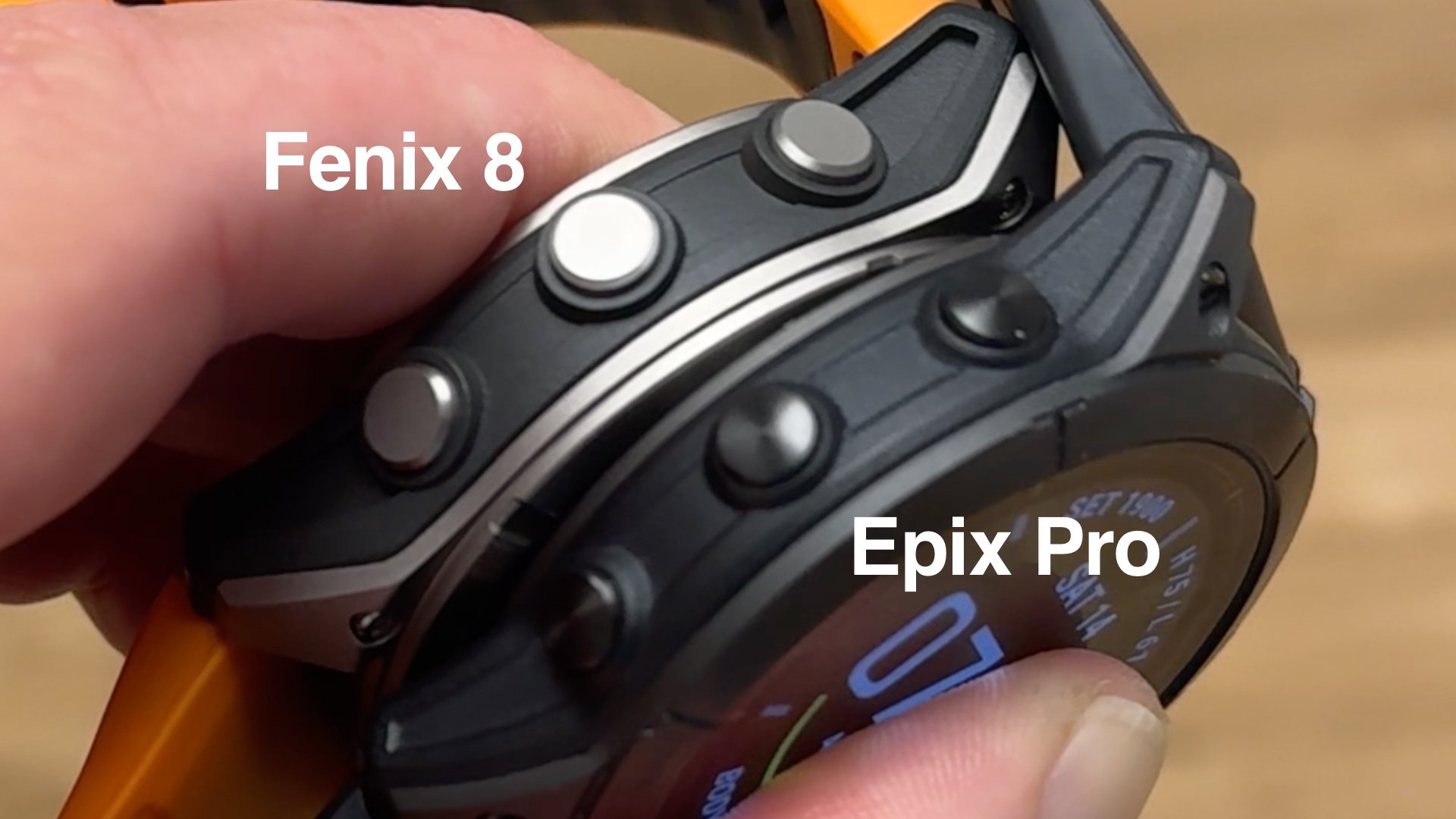
Garmin changed the Fenix 8 buttons to be more watertight, with diving in mind. That’s a nice durability upgrade on paper, but the feel is different. The button press travel is shorter, and instead of the deeper mechanical click you’d get on older Fenix and Epix models, the Fenix 8 has a lighter electronic buzz when you press them.
This doesn’t matter much when you’re sitting at a desk, but in real conditions, cold mornings with gloves on, or when you’re tired on a long hike, the older buttons give clearer feedback that you’ve actually pressed them. The Fenix 8 buttons are usable, but I wouldn’t call them an improvement.
If you liked the long-standing Garmin button feel, you’ll notice the change right away. It’s not a dealbreaker, but it does make the Fenix 8 feel a little less like the rugged outdoor tool Garmin has been known for.
Flashlight

The Garmin Fenix 8 flashlight got a quiet upgrade. Garmin doesn’t advertise the details, whether it’s a new LED or reflector, but in practice it throws a stronger, more useful beam than my Epix Pro. The light is brighter, cleaner, and better at lighting up a dark trail or a tent.
It’s not a feature I’d buy the watch for, but it’s one I’ve grown to appreciate. When you’re fumbling for gear at night or need a quick light on the trail, it’s easier to double-tap your wrist than dig for a headlamp. For me, the flashlight on the Fenix 8 is a nice improvement, even if it isn’t a core selling point.
Navigation Experience
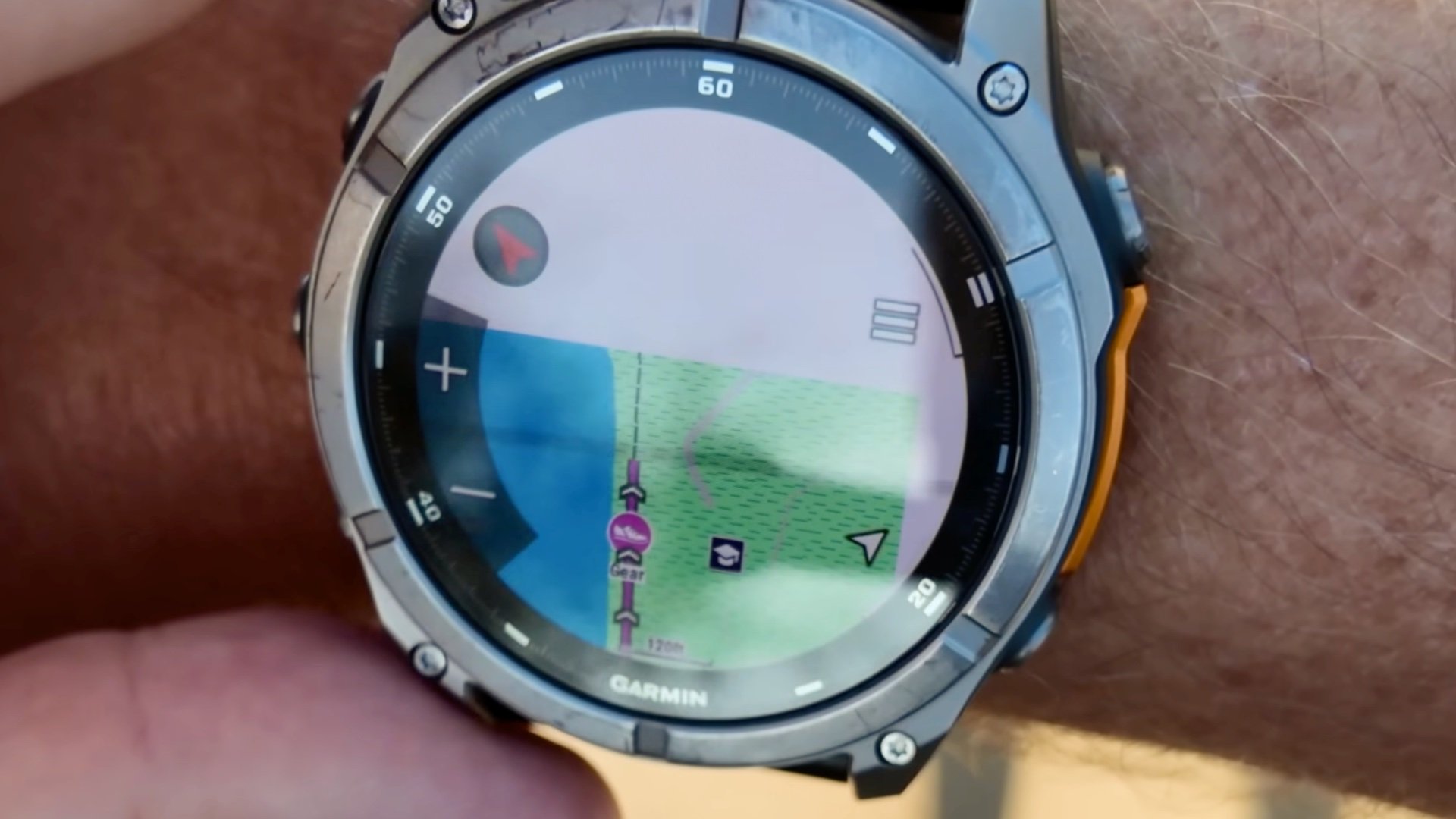
The biggest reason I use a Garmin watch is for offline navigation. The Fenix 8 comes with preloaded maps that include trail names, street names, and points of interest. That’s still one of Garmin’s strengths and a feature that sets it apart from other smartwatches.
Navigation on the watch itself has improved but also changed. You can now build and follow courses directly on the Fenix 8, but in my experience it doesn’t always work smoothly. Since release, the navigation features have been quirky, though recent firmware updates have made them more stable. Garmin also updated the interface to put all the navigation screens into a parallel column where you have to swipe sideways to access them. I don’t think this is as efficient as the older setup where everything lived in the same column, but it’s the way the Fenix 8 now handles it.
One thing I do like is that you can lock out the touchscreen during an activity while still using it on the map screen. When conditions are bad, rain, sweat, gloves, this makes navigation much easier.
For the best experience, I still recommend creating courses beforehand, either online or in the Garmin Connect app. Import a GPX file or build one from scratch, add course points, and then sync it to the watch. That workflow is solid. Garmin also now has direct integration with AllTrails, so you can send a hike directly from AllTrails to your Fenix 8 through Garmin Connect, which is really handy.
Overall, the Garmin Fenix 8 navigation works fairly well, but the screen redraws are still slow, and the new menu flow isn’t an improvement in my opinion. It’s reliable, it gets the job done, but it hasn’t moved forward in the way I’d hoped.
Phone and Smartwatch Features
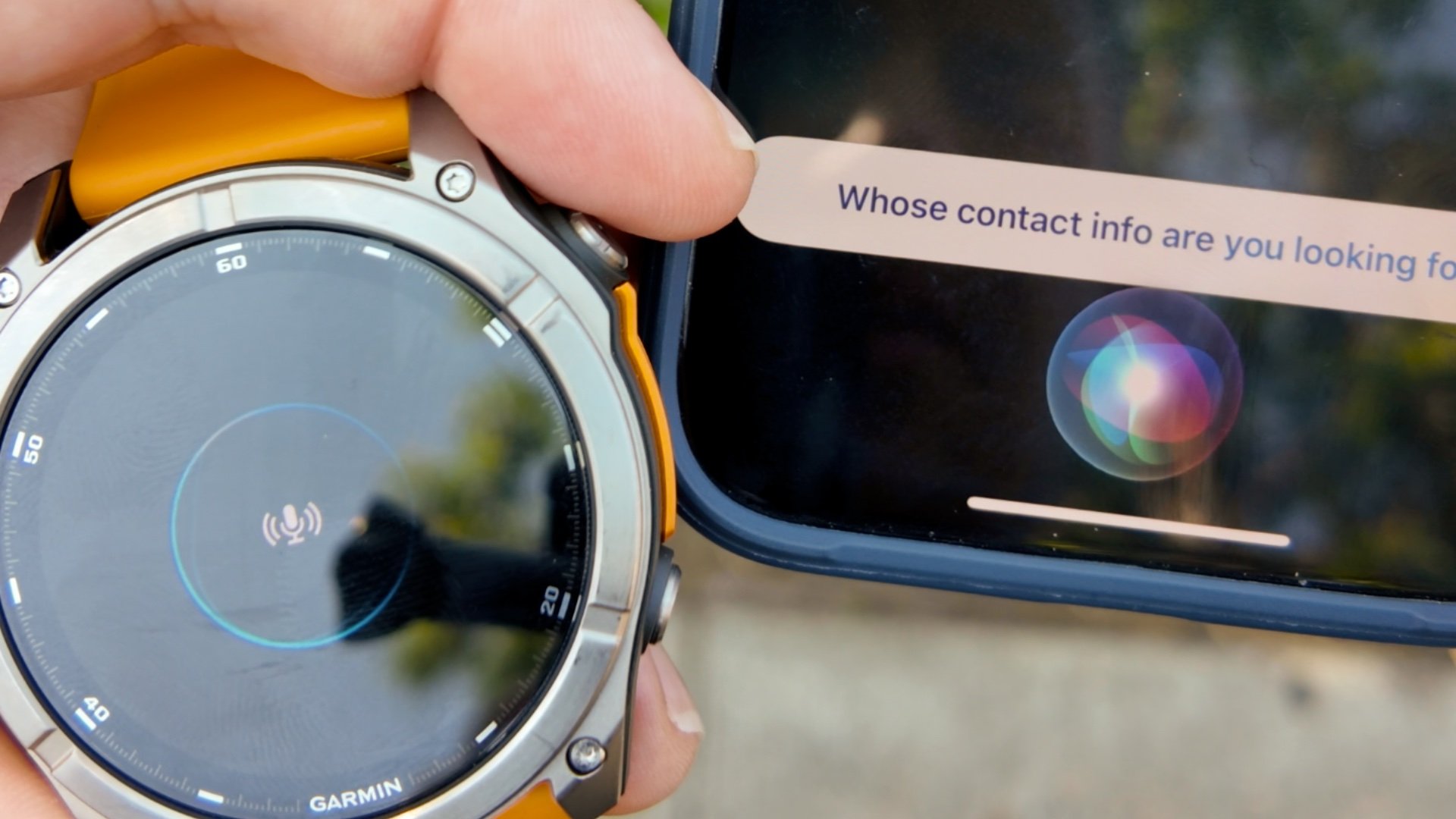
The Garmin Fenix 8 added more phone-style features, but they’re still secondary to the watch’s core outdoor tools. You can start activities with voice commands, record short voice notes (but not sync them to your phone) and press a button to trigger your phone’s assistant (Siri on iPhone, Google Assistant on Android). You can also answer calls through the watch if your phone is connected.
In practice, these features work, but they don’t feel as polished as what you’d get on an Apple Watch. Call quality through the Fenix 8’s mic and speaker is serviceable but not great, and the assistant shortcut only works if you hold the button, there’s no hands-free wake word.
For me, these features don’t matter much, although I do occasionally use it to invoke Siri to drop a reminder or something. But I buy Garmin watches for durability, navigation, and battery life, not for making calls on my wrist. The phone and voice tools on the Fenix 8 are nice extras, but they’re not why you’d pick this watch over an Apple or Samsung option.
Reliability and Bugs
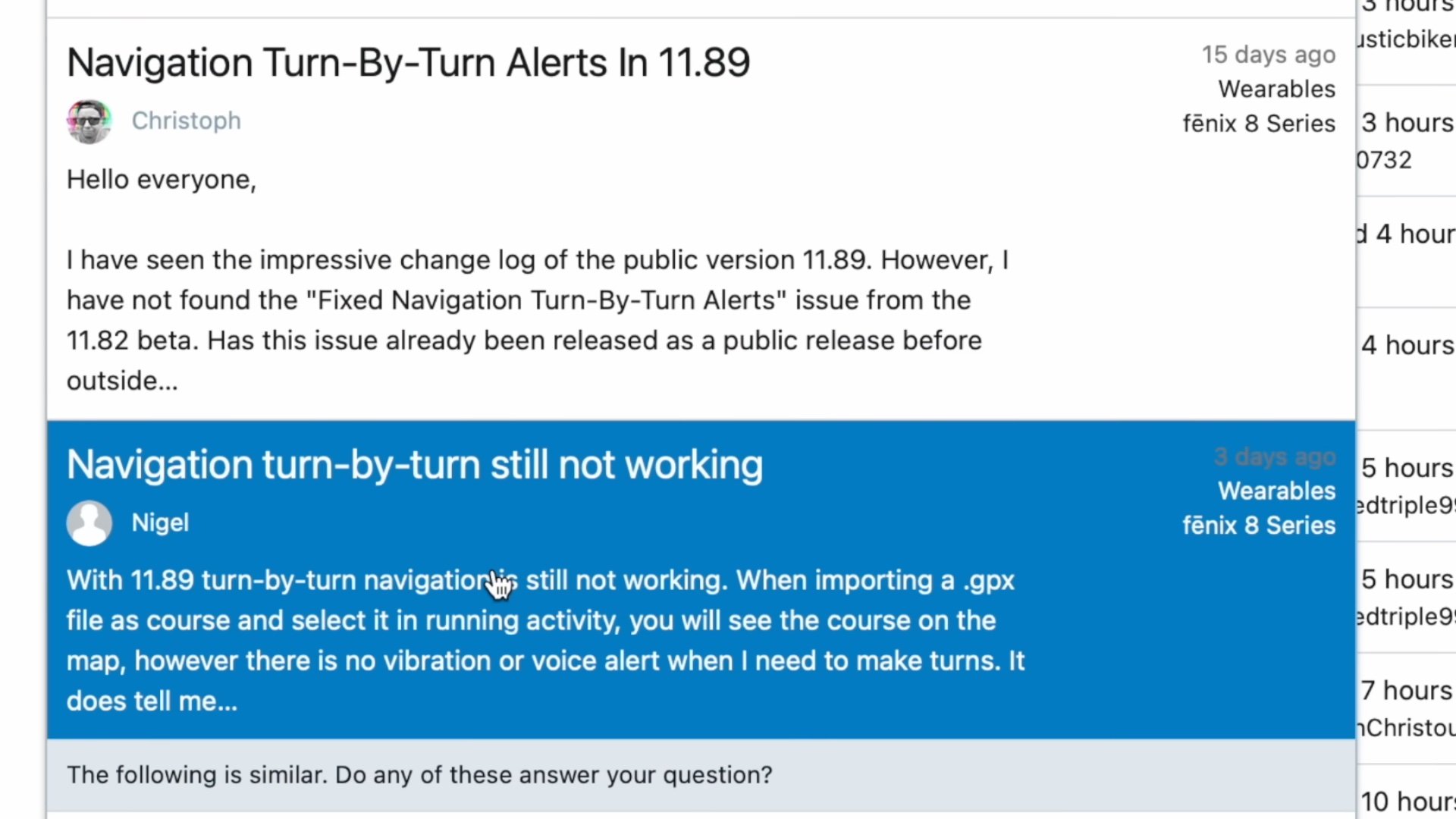
When the Garmin Fenix 8 first came out, reliability was not where it needed to be for a flagship outdoor watch. I had random restarts, and other users reported problems with navigation, watch faces, and general stability. For a $1,200 device that many people rely on for safety, that was disappointing.
Since then, Garmin has rolled out many firmware updates. Stability is much better now but not perfect. I still see the occasional glitch, like a restart if I hit certain shortcuts during an activity, but it hasn’t cost me navigation or activity data in the field. Some users have also reported battery drain issues but those seem less widespread.
Compared to older Fenix models I’ve owned, the Fenix 8 didn’t launch with the same level of trust. Garmin has done a good job patching bugs, but it shouldn’t have shipped in that state to begin with. Today it’s stable enough for daily use and navigation, but I wouldn’t call it flawless.
Should You Buy the Garmin Fenix 8?
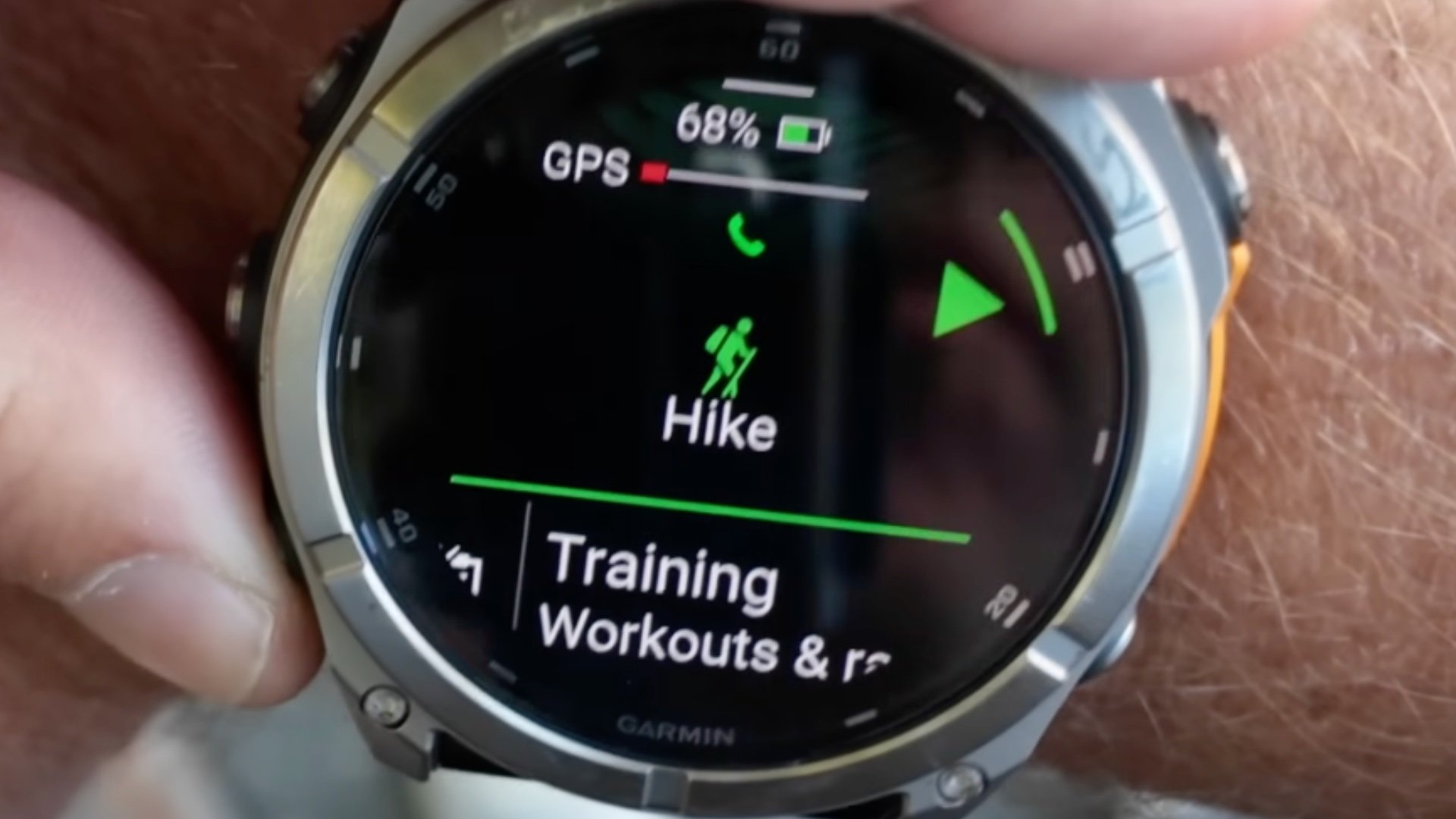
So, should you buy the Garmin Fenix 8? It depends on where you’re starting from.
- If you already own an Epix or older Fenix: I don’t see much reason to upgrade. Accuracy, battery life, and screen performance are basically the same, and the changes in buttons, operating system, and navigation flow don’t add up to a big improvement.
- If you're new to Garmin and/or just want the best: yes, this is the one to get.
- If you’re choosing between Apple and Garmin: For most casual hikers who aren’t out for super long days, don’t need extreme battery life, and aren’t in harsh conditions, the Apple Watch Ultra with an app like Footpath or WorkOutdoors will do the job just fine. But if you’re regularly in bad weather, cold, or multi-day trips where charging isn’t practical, the Garmin Fenix 8 still wins. The combination of long battery life, physical buttons, and offline maps make it the safer pick when conditions get rough.